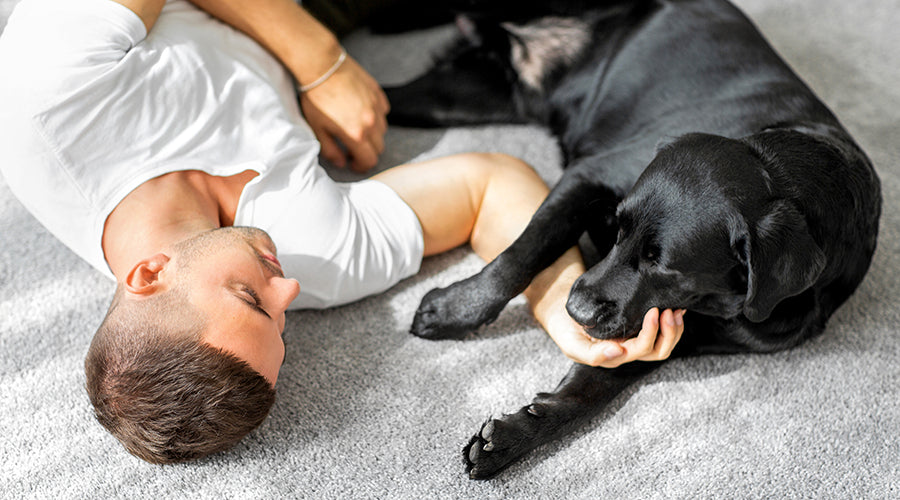SPECIALS: up to 35%SAVINGS on Bundles+FREE Shipping on USA orders over $35
SPECIALS: up to 35%SAVINGS on Bundles+FREE Shipping on USA orders over $35
Add description, images, menus and links to your mega menu
A column with no settings can be used as a spacer
Link to your collections, sales and even external links
Add up to five columns
Add description, images, menus and links to your mega menu
A column with no settings can be used as a spacer
Link to your collections, sales and even external links
Add up to five columns
Add description, images, menus and links to your mega menu
A column with no settings can be used as a spacer
Link to your collections, sales and even external links
Add up to five columns
Add description, images, menus and links to your mega menu
A column with no settings can be used as a spacer
Link to your collections, sales and even external links
Add up to five columns
Understanding the human-animal bond: it’s a two-way street!
May 01, 2020 3 min read

We provide a lifetime of comfort and care for our animals, but have you considered all that they give us? We break down the reciprocity of the human-animal bond.
Do you sometimes feel like you are doing all the giving? Feeding, training, exercising, body and coat care – we do it all for our pets. But while it’s true that we give comfort and care to our animals, we can’t forget that they give us that comfort and care right back – just in different forms. Let’s take a look at a couple of the ways that the human-animal bond is mutually beneficial.
Mental health
A 2009 paper found that companion animals “meet many core psychosocial needs and enrich [our] lives.” Many studies including a comprehensive review, have found that animal-human interaction can reduce anxiety, depression, and loneliness while simultaneously enhancing social support and general well-being. From the tail wags and excitement, to their friendly sounds, nuzzles and snuggles, eye contact, and the desire to please – all of these are signs that your animal is taking care of you, too.
Physical health
Pet parents are more likely to go outside, thus getting more fresh air and exercise than those who don’t share their lives with an animal companion. A 2019 study noted the positive influence of dog and horse ownership on human physical activity levels. But the physical benefits of owning an animal can extend out of the realm of just exercise! One study found that following a heart attack, patients with pets had a significantly higher 1-year survival rate than those without pets. Additionally, interactions with companion animals increase neurochemicals associated with relaxation and bonding, to help decrease blood pressure and improve the overall health of the human immune system.
Grooming for bonding
We can give animals mental and physical comfort by caring for their body, skin and coat. But this interaction isn’t one-sided. In nature we see animals grooming themselves and one another. It is a social behavior that produces a bonding effect and provides comfort, in addition to cleaning the coat. Grooming time should be enjoyable and relaxing for both you and your animals. If it's not, then consider what may be the issue.
- Environment – are you in a quiet and calm space? Always groom your pet in an area that is without any quick moving or noisy distractions.
- Your mood – are you feeling agitated or upset? Your dog, cat or horse can pick up on negative emotions. Always be in a calm frame of mind to avoid making the grooming experience more stressful for them.
- Your grooming tools – are they sharp or pulling on your animal’s fur? Choosing the right tool is crucial for a positive grooming experience. Be sure to invest in gentle alternatives that remove hair while also massaging the tissue to give both you and your animal a sense of deep relaxation.
The human-animal bond is significant, especially in light of the stay-at-home COVID-19 living conditions. We hope that you take this quality time to not only stay safe and healthy, but to build a deeper appreciation for one another.
References
Brooks, H.L., Rushton, K., Lovell, K. et al. The power of support from companion animals for people living with mental health problems: a systematic review and narrative synthesis of the evidence. BMC Psychiatry 18, 31 (2018). https://doi.org/10.1186/s12888-018-1613-2
Machová, K., Daďová, K., Chaloupková, H. et al. Does having a pet influence the physical activity of their young female owners?. BMC Public Health 19, 1672 (2019). https://doi.org/10.1186/s12889-019-7962-z
Walsh, Froma. (2009). Human-Animal Bonds I: The Relational Significance of Companion Animals. Family process. 48. 462-80. 10.1111/j.1545-5300.2009.01296.x.
Subscribe
Sign up to get the latest on sales, new releases and more …
